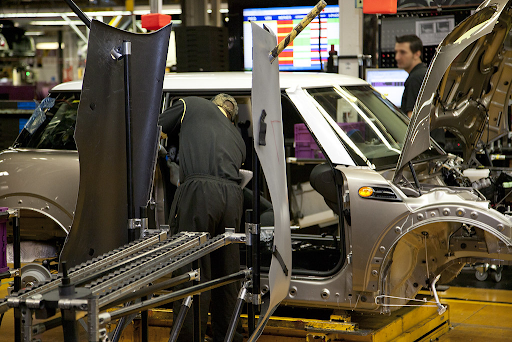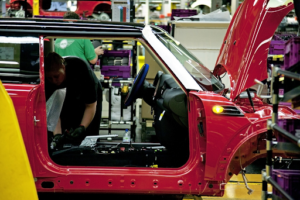
The automotive industry, a cornerstone of global manufacturing, has long relied on the intricate process of sheet metal bending to sculpt the vehicles that define our roads. This technique, both an art and a science, allows manufacturers to transform flat sheets of metal into complex shapes and structures, essential for the creation of cars that are not only functional but also aesthetically pleasing. This overview delves into the essence of sheet metal bending, a process pivotal to automotive design and efficiency, shedding light on its significance, methodologies, and the innovation it drives in the industry.
What Is Sheet Metal Bending?
At its core, sheet metal bending is the process of deforming a flat piece of metal along one axis to create an angle, achieving a desired shape without compromising the material’s integrity. This foundational technique employs a variety of materials, such as steel, aluminum, and stainless steel, chosen for their unique properties and suitability for different aspects of automobile manufacturing.
Why Is Sheet Metal Bending Used in Automobile Manufacturing?
The adoption of sheet metal bending in the automotive sector is propelled by its myriad of benefits. This technique enhances manufacturing efficiency, reduces costs, and allows for a high degree of design flexibility. Below are the advantages that make sheet metal bending indispensable:
- Cost-effectiveness
- Manufacturing efficiency
- Design flexibility
How Does Sheet Metal Bending Work?

The bending process unfolds through a series of well-choreographed steps, from the initial placement of the metal sheet in the machine to the precise application of force that molds the material into the desired shape. Key factors influencing this process include the type of bending technique employed, the material’s properties, and the machinery’s capabilities.
What Are the Different Types of Bending Techniques?
Several bending techniques are prevalent in the industry, each tailored to specific requirements and outcomes. These include:
Air Bending: Utilizes a punch and die arrangement to form the bend with minimal contact.
Bottoming and Coining: Involves pressing the sheet metal firmly into the die to create sharp, precise bends.
Folding: Engages a folding beam to wrap the material around a clamping bar.
Wiping: Uses a die that moves downward against the material, pressing it against a stationary edge.
What Equipment Is Used in Sheet Metal Bending?
The sophistication of sheet metal bending is supported by a diverse array of machinery and tools, designed to accommodate various materials and bending techniques. These include:
- Press brakes machines
- Folding machines
- Panel benders
- Tube benders
Understanding the Mechanics of Bending
The underlying mechanics of bending revolve around principles such as bend angle, bend radius, and the phenomenon known as springback—where the material attempts to return to its original shape post-bending. Mastery over these elements is crucial for achieving precision in the bending process.
What Is Springback, and How Can It Be Controlled?
Springback poses a significant challenge in sheet metal bending, necessitating strategies to predict and mitigate its impact. Techniques include adjusting the bend angle and employing computer simulations to anticipate the material’s behavior.
Materials and Their Properties in Bending
The choice of material significantly affects the bending process, with each metal offering distinct properties that influence its bendability and final application. Common materials include:
Steel: Favored for its strength and versatility.
Aluminum: Chosen for its lightweight and flexibility.
Stainless Steel: Valued for its durability and corrosion resistance.
Design Considerations for Sheet Metal Bending
Efficient bending is predicated on thoughtful design considerations, such as material selection, bend radius, and the sequencing of bends. These elements are crucial for minimizing waste and ensuring the structural integrity of the bent components.
How to Optimize Design for Bending?
Optimizing design for bending involves leveraging simulation software and adhering to best practices in part layout. These strategies enable designers to anticipate challenges and refine their approaches for optimal outcomes.
Quality Control in Sheet Metal Bending

Quality control is paramount in sheet metal bending, ensuring that each component meets stringent standards for accuracy and performance. Common measures include dimensional verification and surface inspection, aimed at identifying and rectifying defects.
What Are the Common Defects in Bending, and How Are They Addressed?
Defects such as over-bending, under-bending, and surface damage can compromise the quality of the final product. Solutions range from adjusting the bending process to implementing preventive maintenance on machinery.
The Role of Automation in Sheet Metal Bending
Automation has revolutionized sheet metal bending, introducing greater precision, efficiency, and safety. While it presents challenges, such as the initial investment and integration with existing workflows, its benefits underscore the future direction of the industry.
Sheet Metal Bending in Automotive Innovation
Sheet metal bending continues to evolve, driven by advancements in technology and materials science. These innovations not only enhance the capabilities of bending processes but also open new avenues for automotive design and manufacturing.
Safety Considerations in Sheet Metal Bending
Safety remains a critical concern in sheet metal bending operations. Adherence to best practices, such as proper machine usage and personal protective equipment, is essential for protecting workers from hazards.
Case Studies: Sheet Metal Bending in Automotive Applications

Through a series of case studies, the transformative impact of sheet metal bending in automotive manufacturing is illustrated. These examples highlight the technique’s role in creating components that are both functional and formative to vehicle design.
Challenges and Solutions in Sheet Metal Bending
Despite its many advantages, sheet metal bending faces challenges related to material behavior, process control, and environmental sustainability. Addressing these issues requires a combination of technological innovation and adherence to best practices.
Conclusion
Sheet metal bending stands as a testament to the ingenuity and persistence of the automotive industry. As it continues to adapt and evolve, its contributions to automotive manufacturing promise to shape the vehicles of the future, driving forward in efficiency, design, and innovation. The journey of bending metal into motion encapsulates the relentless pursuit of perfection that defines the automotive world.






1 thought on “The Art and Precision of Sheet Metal Bending in Automobile Manufacturing”